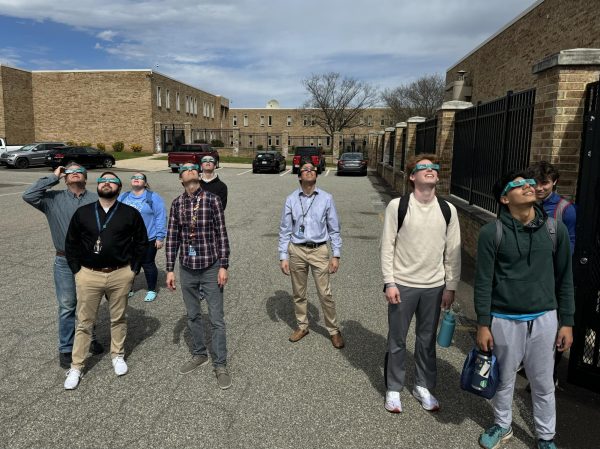This Week in Science
Can you store information in your DNA?
Until the early 1970s, the idea that DNA could be altered was completely farfetched, yet alone manipulate it to store data like a computer. Now, it is a well accepted fact that DNA can be changed to express certain traits and soon could store data on nucleotides. Scientists at New York Genome Center and the Center for Computational Biology and Bioinformatics at Columbia managed to store a computer operating system, a movie, a picture of the Pioneer plaque, a study by theorist Claude Shannon, a computer virus, and an Amazon gift card. First, they took mapped the binary information onto nucleotides. After that, they synthesized the nucleotides into DNA and stored it in a test tube. Then to extract the data, they sequenced that DNA. The data they got back was exactly the same as the original data. This discovery can possibly revolutionize the way we handle data. DNA is designed to store information and is “built” in a way that allows it to store A LOT of data. One gram of DNA can store a little less than 3.5 billion times as more data as a 64GB iPhone. Also, data storage devices such as CDs and floppy disks become obsolete while DNA can be stored for long periods of time and the data from the DNA be transferred onto any device.
For more information: https://www.fastcoexist.com/3068819/we-can-now-use-dna-to-store-everything-from-a-movie-to-an-amazon-gift-card
Patch Could Possibly Stop Severe Peanut Allergies
In the U.S. alone, about 3 million people suffer from peanut allergies and that number is only expected to increase. However, DBV Technologies is currently working on a patch that will decrease the severity. They just presented the data from Phase II at the American Academy of Allergy, Asthma and Immunology conference. In the trial, people from ages 6-55 wore a patch for 3 years; however, the best results came from children. A total of 83% of children between 6 and 11 years old were able to eat 1 gram of peanuts without an allergic reaction. That is about ten times the amount of peanuts they could eat before the trial. They are now in the process of Phase III and preparing for the FDA approval process.
For more information and how the patch works: http://www.sciencealert.com/there-s-a-patch-that-could-stop-severe-peanut-allergies
Robot Controlled By Your Brain
Scientists and Engineers from MIT’s Computer Science and Artificial Intelligence Laboratory developed a method in which a person can influence what a robot does via an EEG cap, which measures electrical activity in the brain. The robot will do a task and the algorithm they created searches for error-related potentials, which the brain generates when it spots a mistake. The system picks up on the error-related potentials and alters the robots course of action. The robot they created sorted spray paint and spools of wire. An observer would be connected to the EEG and monitor the robot. If the robot tried to put the spool of wire in the box for paints, the observer would notice the mistake. The EEG would read the error-related potentials and send the information to the robot. The robot would then stop putting the wire in the spray paint box and start to put the wire in the other box. They researchers now are trying to enhance this technology and make it able to navigate multi-choice tasks. If they succeed, this could be implemented in assembly robots, autonomous cars, and other robots.
For more information and a video: https://www.engadget.com/2017/03/06/mit-csail-mind-control-robot/











